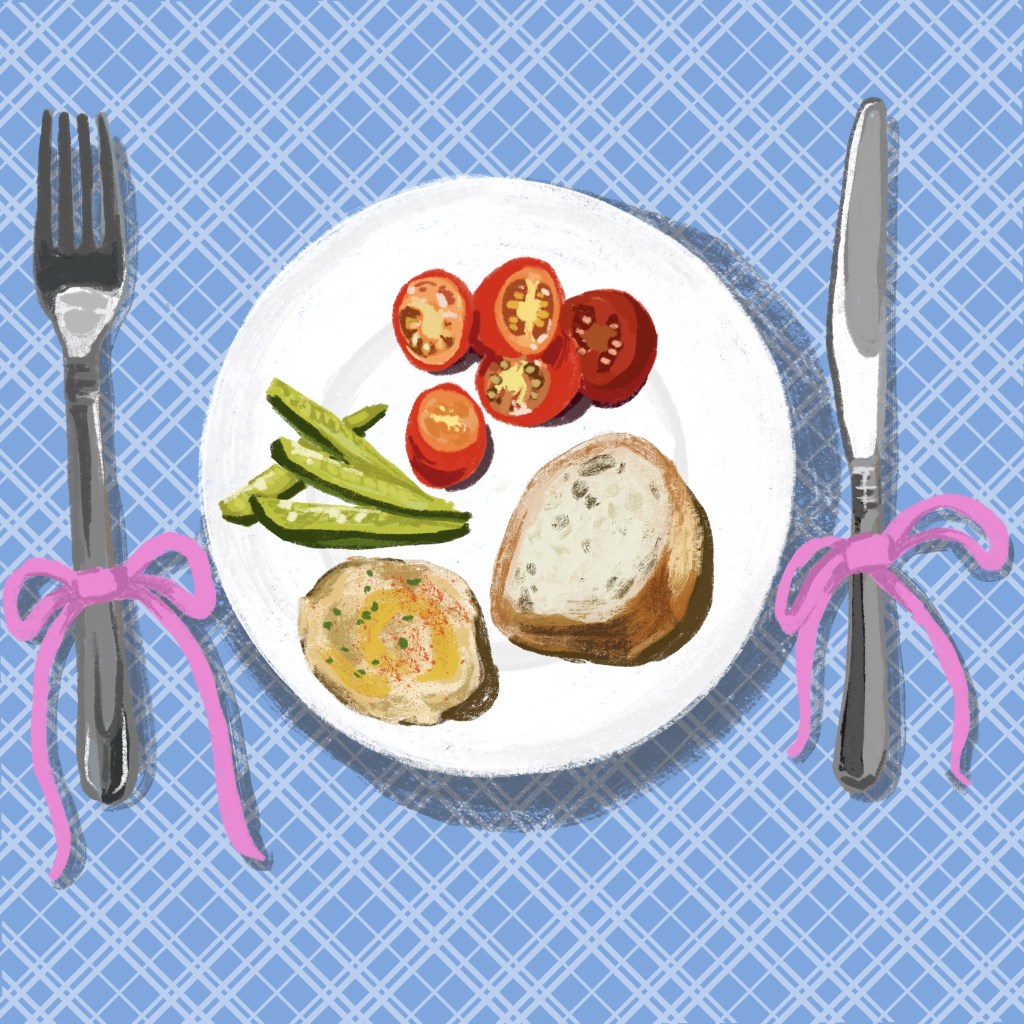Bethany Banks discusses the ‘Girl Dinner’ phenomenon and the implications of glamourising aspects of modern diet culture, observing how casual, fun trends can develop into more serious issues.
This summer saw an influx of micro-trends popularised mostly on TikTok, featuring the prefix ‘Girl’; women are documenting their ‘hot girl walks’, buying excessive amounts of green powders and expensive serums in an effort to classed as ‘clean girls’, and categorising themselves into groups based on seemingly random nouns, in order to cultivate the desired aesthetic. From ‘rat girls’ to ‘vanilla girls’, the list of identities seems never-ending. One of the most dominant sub-sections of this trend is ‘Girl Dinner’, coined on TikTok by a woman named Olivia Maher, showing off a medieval-style meal made up of small amounts of bread, cheese, pickles and grapes.
The trend began to take the app by storm, as more and more women joined in to reveal the minimum-effort dinners they make for only themselves, to be enjoyed when no one else is looking – a handful of crackers, a piece of frozen pizza, some grapes, a cube of cheese? Virtually anything goes. In its original form, the trend can be seen as something of a liberation, subverting the typical expectations for women to put their needs below those around them, and instead make simple meals for themselves, that they take pleasure in. Certainly, it is a release from the traditional burden on women to put food on the table for the family.

However, whilst ‘Girl Dinner’ is celebrated for being low effort, it has been criticised for being low calorie. Often, the portion sizes of ‘Girl Dinners’ are small and its contents are unsatisfying, leading The New York Post to dub the trend a “disturbing” display of disordered eating habits, disguised under a cutesy, accessible new name, with a catchy TikTok audio to match. Certainly, as the trend ballooned, the videos themselves began to show less actual food, dinner not fit for ‘girls’, but perhaps a toddler. This creates the argument for the ‘Girl Dinner’ trend as an infantilisation of women and their eating habits, simply becoming another way of reinforcing harmful diet culture ideals targeted specifically towards girls.
Although perhaps not the original intentions of the trend and its creators, the videos taking part began to show more and more signs of this; the platform of TikTok being a highly influential factor. A new study published in the science journal PLOS One states ‘Weight-normative messaging predominates on TikTok’, and found an overwhelming glorification of weight-loss on the app. Certainly, TikTok itself is the ideal platform for dangerous eating habits to be promoted and glamorised, with its audience made up primarily of those in high school and college, and an eerily targeted algorithm that ensures you only see more of the content you have engaged with. Therefore, as the ‘Girl Dinner’ trend gained popularity, the algorithm easily took over, causing many girl’s ‘For You Pages’, myself included, to be flooded with more and more videos of the plates other women were eating, the portions becoming smaller and smaller with every scroll. It is incredibly easy to be sucked in by this crafty algorithm, creating a breeding ground for toxic diet culture ideals to be spread between young women and girls, the participatory nature of the app playing into the often competitive nature of disordered eating.
As a result, it is clear to see how the ‘Girl Dinner’ trend was able to develop much further from its light-hearted and perhaps even empowering origins, into yet another encouragement that women should eat small and unfulfilling portions – a message that diet culture has perpetuated long before the existent of TikTok, social media, and certainly, ‘Girl Dinner’.
